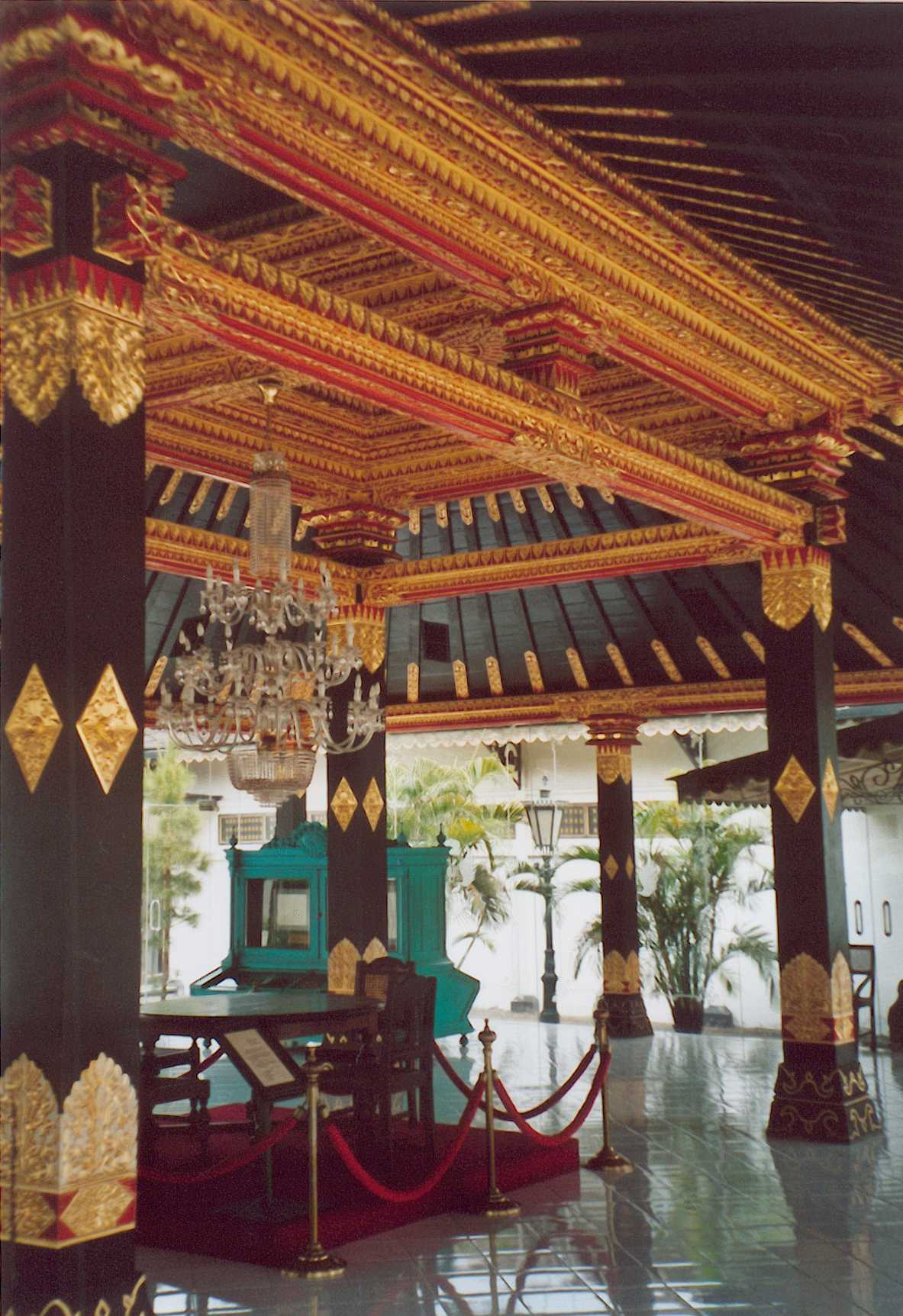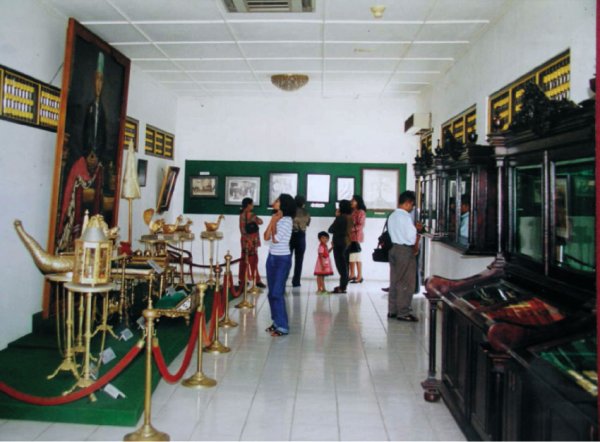Kraton or the Palace where Sultan and his family of Yogyakarta live is located in the center of the axis stretching from the north to the south, and in the secondary axis from the east to the west. It is encircled by row of the mountains called the Horizon as the border of the universe.
Kyai Brajanala bell chimes several times, its voice not only filled but heard up to Siti Hinggil and Bangsal Pagelaran Yogyakarta Palace. While in Sri Manganti, the chanting in Javanese ancient language is heard being sung by a palace servant. An old book, offerings, lanterns, and gamelan lay in front of him. Some foreign tourists seem to listen to macapat song solemnly, and sometimes they are looked pressing the shutter button to take pictures. Although did not know the meaning of the song, I also sat in the front row. Javanese song sound that floated slowly mixed with fragrance of flowers and incense smoke, created a magical atmosphere that created a complacent. On the right side appeared 4 other palace servants who took turn preparing to sing. Outside the pavilion, the birds chirped noisily while flew from the sapodilla tree tops which usually grow in Yogyakarta Palace complex and then landed on the grass.
Keraton Kasultanan Ngayogyakarta Hadiningrat or now better known by the name of Yogyakarta Palace is the center of Javanese culture living museum that is in the Special Region Yogykarta (Daerah Istimewa Yogyakarta). Not just becomes the place to live for the king and his family, the palace is also a main direction of cultural development of Java, as well as the flame guard of the culture. At this place tourists can learn and see directly on how the Javanese culture continues to live and be preserved. Yogyakarta Palace was built by Pangeran Mangkubumi (Prince Mangkubumi )in 1755, several months after the signing of the Perjanjian Giyanti (the Agreement Giyanti). Banyan forest (Hutan Beringin) was chosen as the place for building the palace because the land was between two rivers that were considered good and protected from possible flooding. Although already hundreds of years old and were damaged by the massive earthquake in 1867, Yogyakarta Palace buildings still stand firmly and well maintained.

Visiting Yogyakarta Palace will provide both valuable and memorable experience. The palace that became the center of an imaginary line connecting Parangtritis Beach and Mount Merapi has 2 booth doors. The first in Tepas Keprajuritan (in front of Alun-Alun Utara), and in Tepas Tourism (Regol Keben). If entering from Tepas Keprajuritan, visitors can only enter Bangsal Pagelaran and Siti Hinggil and see a collection of some palace carriages, if entering from Tepas Pariwisata, then you can enter Sri Manganti complex and Kedhaton where there is Bangsal Kencono (Kencono Ward) that is the main hall of the kingdom. The distance between the first and second booth door was not far, just by walking down Jalan Rotowijayan, visitors can walk or ride a rickshaw.

There are many things that can be seen at Yogyakarta Palace, ranging from the activity of servants in the palace who are doing the job or to see properties collection of the palace. Collections are kept in glass boxes that are spread various rooms ranging from ceramics and glassware, weapons, photographs, miniatures and replicas, to various kinds of batik and its deorama of the making process. Furthermore, tourists can also enjoy the art performances with different schedules each day. The show starts from the human puppet, macapat, puppet show, shadow puppets, and dances. To enjoy art performances, tourists do not need to pay additional costs. If you come on Tuesday Wage, you can watch Jemparingan or archery competition in Mataraman style in Kemandhungan Kidul (South Kemandhungan). Jemparingan is conducted for the heritage of Sri Sultan HB X. The uniqueness of this jemparingan is that every participant must wear Javanese traditional clothing and archery in a sitting position.
After enjoying the show macapat, YogYES headed around the the palace complex and went into batik museum which was inaugurated by Sri Sultan HB X in 2005. The museum collection is quite diverse ranging from a variety of batik cloth up to the equipment to make batik from the HB VIII up to HB X. In addition, in the museum, several collections of gifts from a number of batik entrepreneurs in Yogyakarta and other areas were stored. While enjoying the museum's collection, YogYES’ sight was on one of the old wells that were built by Sultan Hamengkubuwono VIII. On top of a well that has been closed using aluminum netting, there are writings that prohibit visitors to put in money. Being curious with the intention of the sentence, YogYES moved closer and looked into the well, it turned out that at the bottom of the well there are coin and paper money were scattered.
Being satisfied walking around the palace, YogYES stepped out Regol with cheerful hearts. On the way to the parking lot, a sign that offers classes to learn nembang / macapat, write and read Javanese letters, classical dance, and to learn how to be a puppet master was appeared. Apparently, in Yogyakarta Palace complex, there are several Javanese culture and art course centers or learning centers. YogYES, then promised that someday would come back to learn how to spell and write hanacaraka letters and learn to dance.
Opening Hours: 08:00 - 14:00 p.m
Admission:
- Rp. 3,000 (Tepas Kaprajuritan)
- Rp. 5,000 (Tepas Pariwisata)
The camera/video permit: Rp. 1,000

